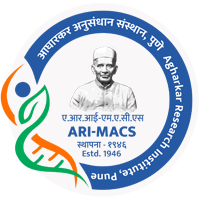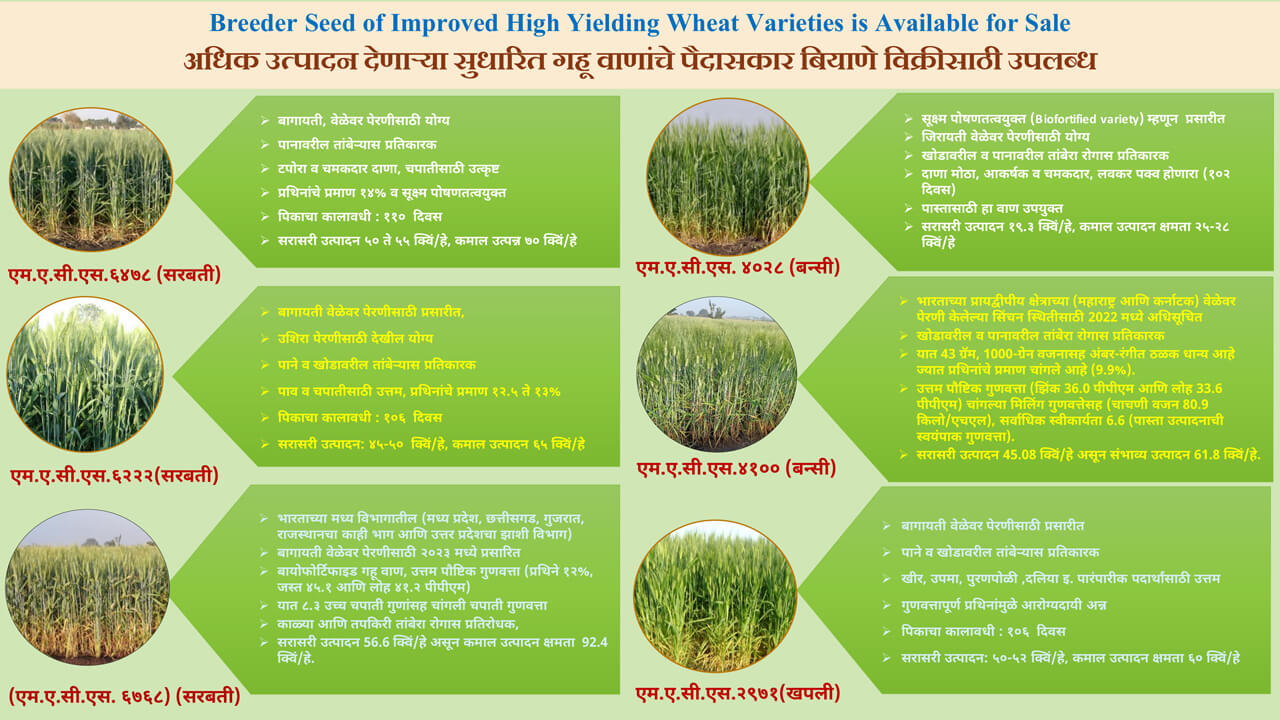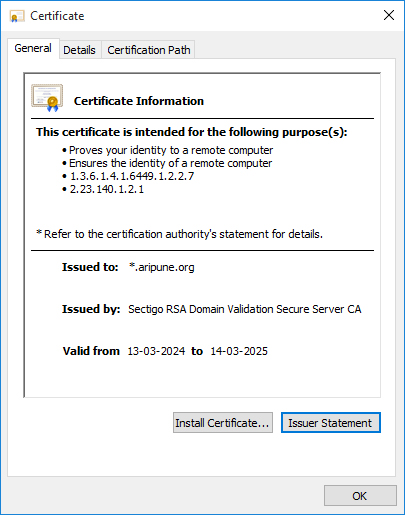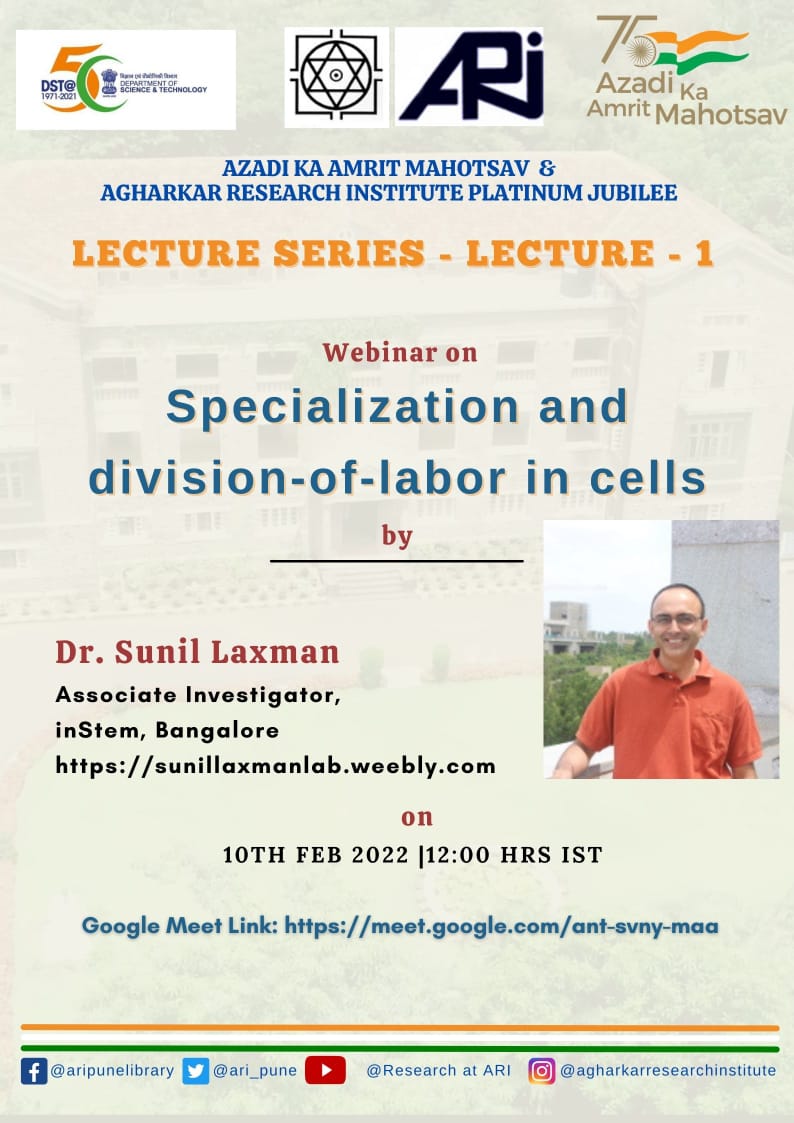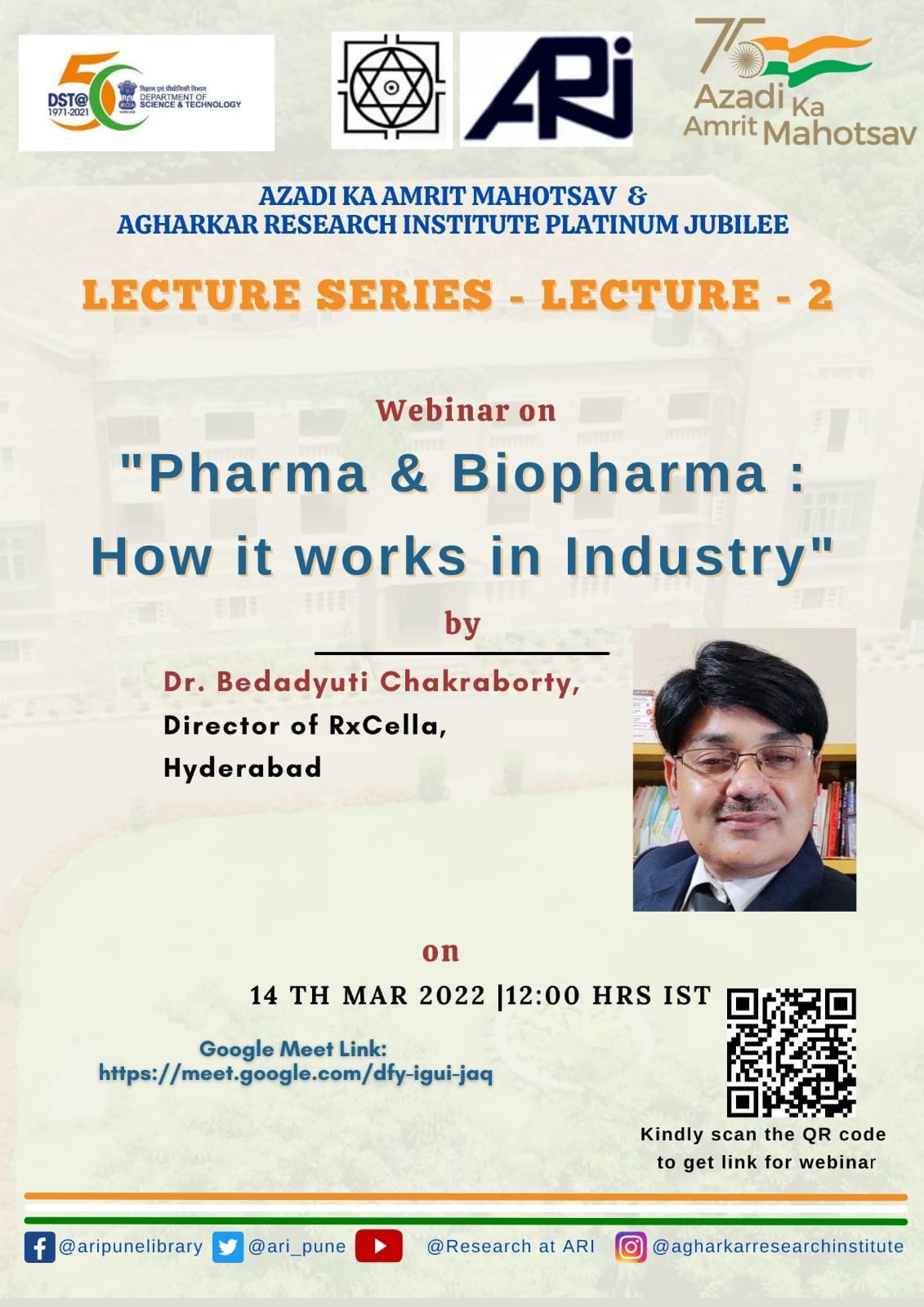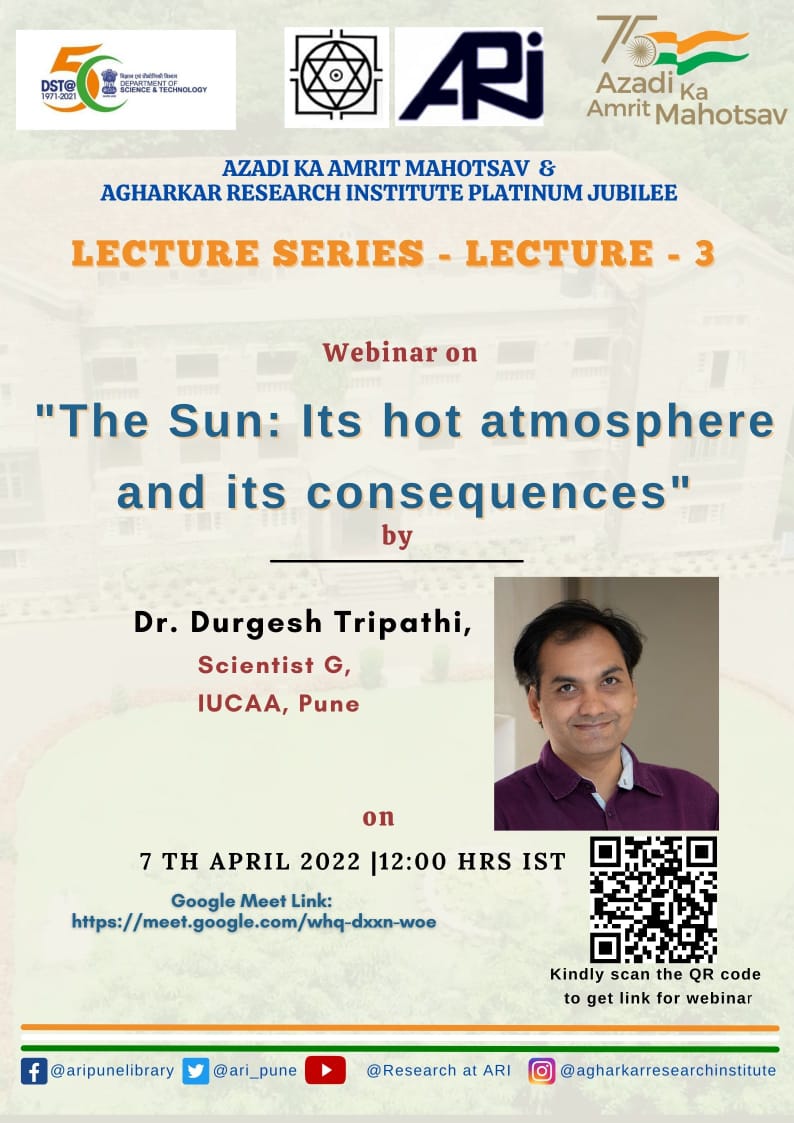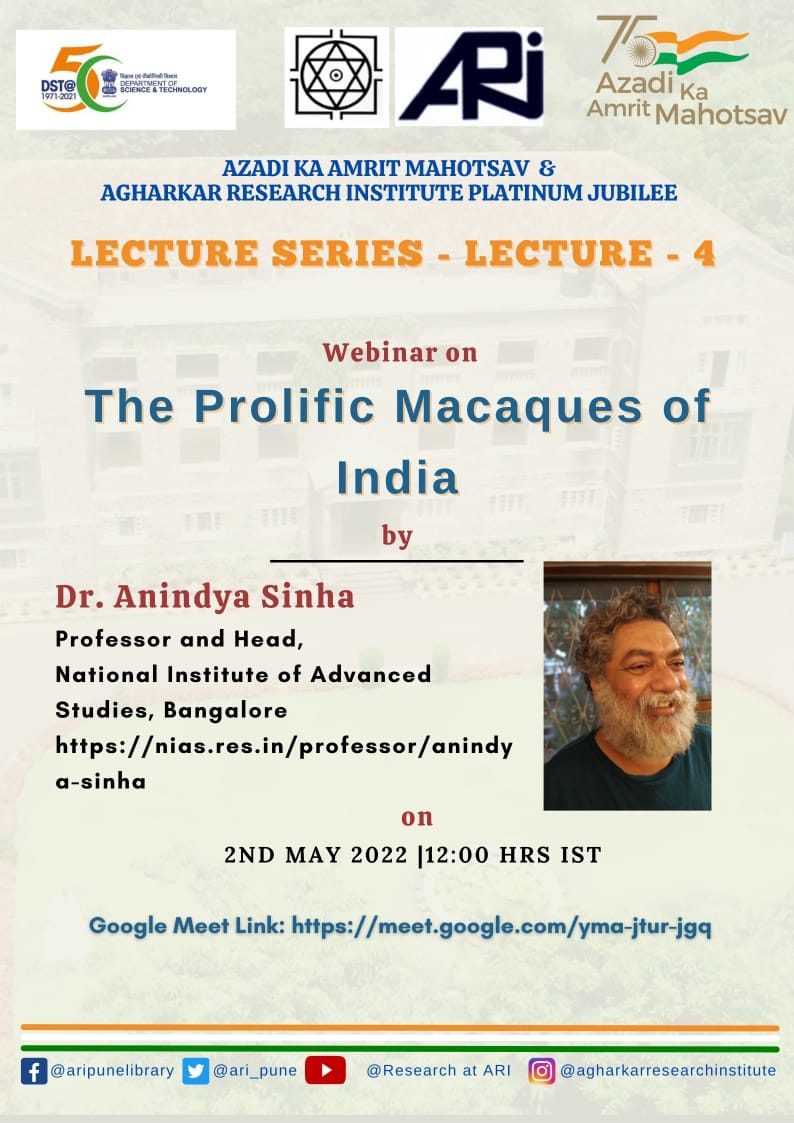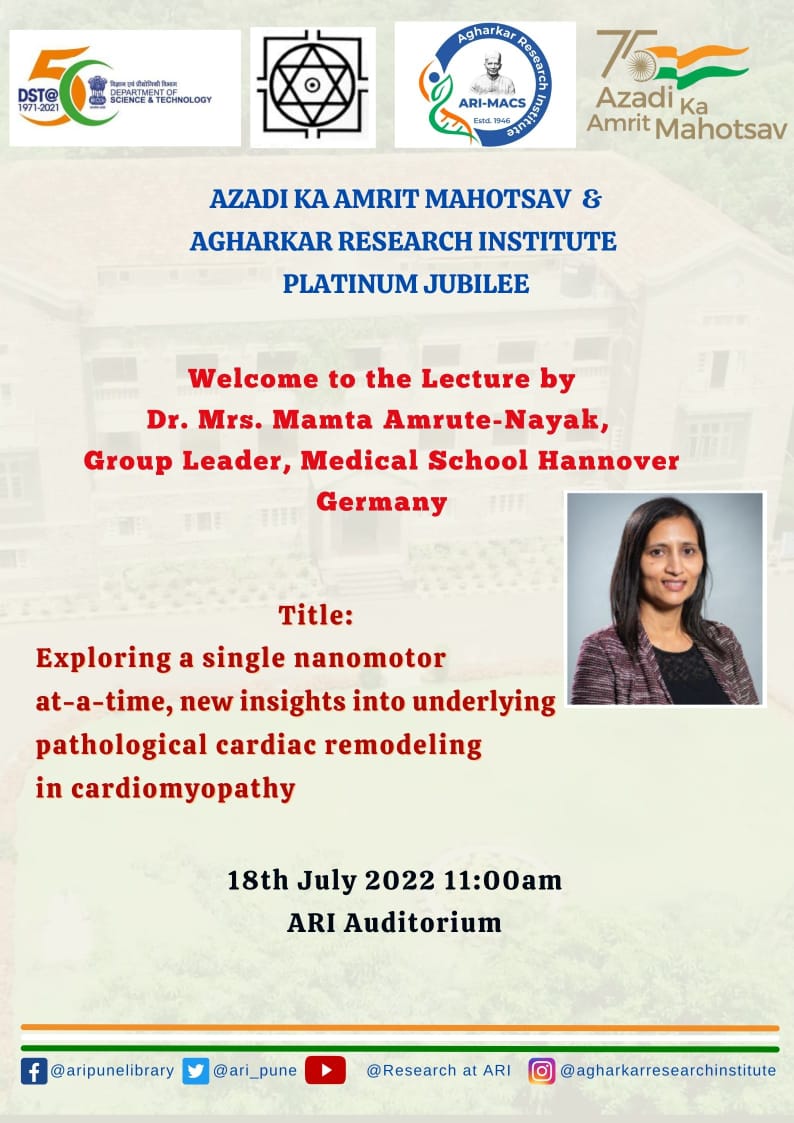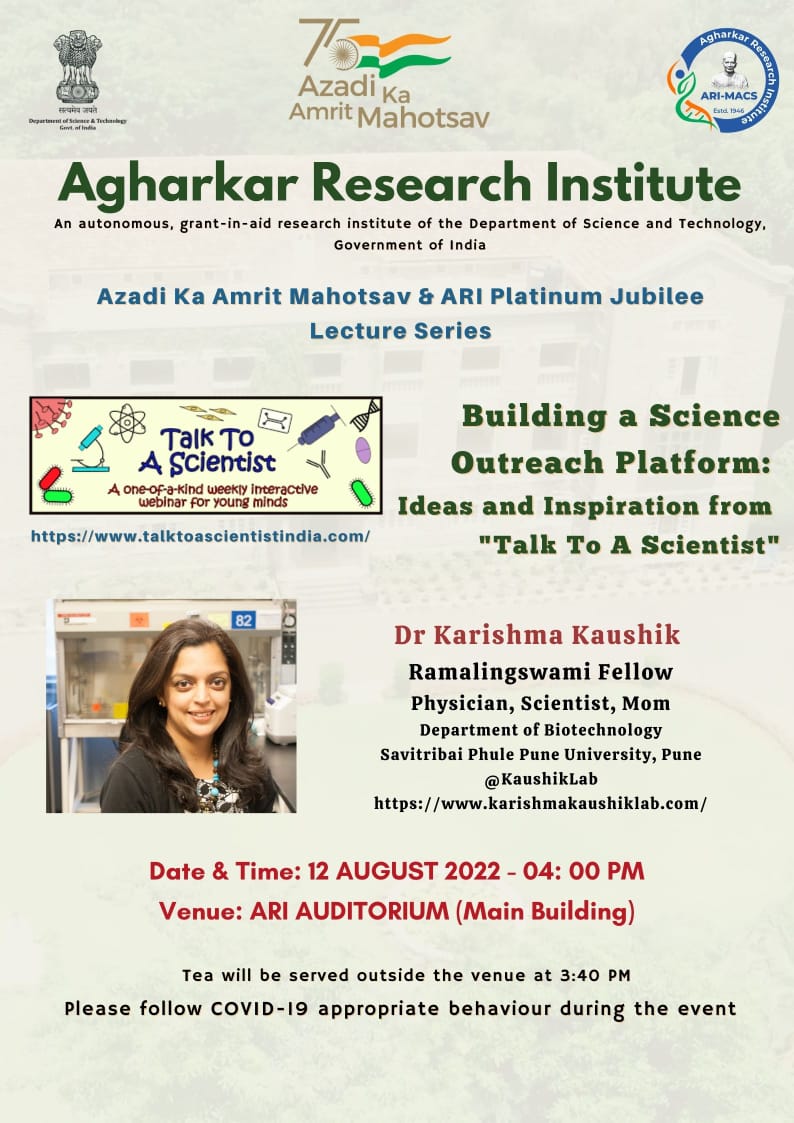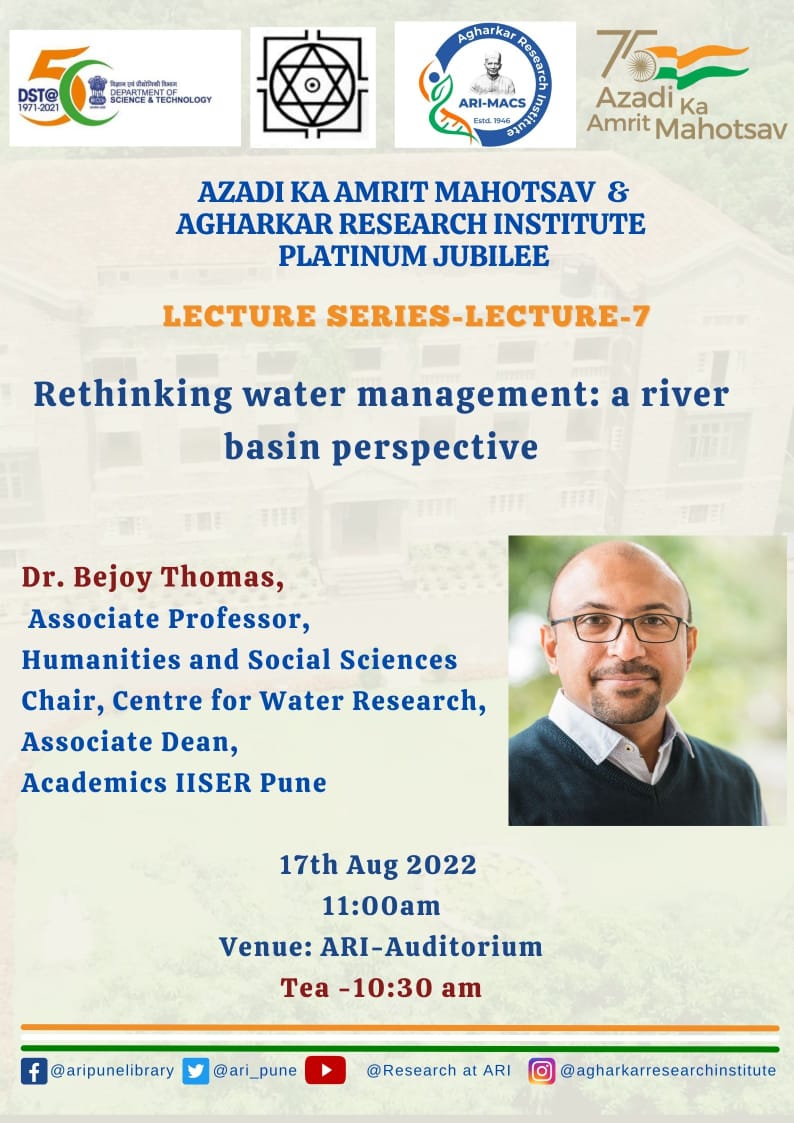Welcome To Bioprospecting Group
The thematic area of “Bioprospecting” has emerged from the erstwhile Chemistry andBiometry & Nutrition Groups of the Institute. Bioprospecting is the discovery and commercialization of new products based on biological resources. The newly formed group works on the discoveryof molecules from biological resources that have applications in agriculture, health, and theenvironment. The primary focus of research in the thematic area of“Bioprospecting” is the isolation and synthesis of naturally occurring compounds, derivatives,and their use in pharmaceuticals, nutraceuticals, agriculture, and industries. We also focuson deciphering the mechanistic approach of these compounds for disorders such asAlzheimer’s disease, anemia, diabetes, cancer, and the chikungunya virus.
Area of focus
- Natural and synthetic compounds for Alzheimer’s disease.
- Derivatives of natural compounds for the treatment of cancer.
- Sustainable utilization of medicinal plant resources in Maharashtra.
- Development of nutraceuticals for metabolic and neurological disorders.

Google Scholar / Social Media
Name: Dr. Prasad Padmkar Kulkarni
Designation: Scientist – F
Brief Background :
Dr. Prasad Kulkarni is working at Agharkar Research Institute, Pune, as Scientist F. Dr. Kulkarni completed PhD in Chemistry from the Department of Chemistry, Savitribai PhulePune University. He has more than 20 years of research experience in Chemistry and Biochemistry. He did postdoctoral work at the Hospital for Sick Children, Canada, andRowett Research Institute, U.K. He was a British Council Visiting Fellow at the Departmentof Chemistry at the University of Hull. Currently, he is working at Bioprospecting Group,Agharkar Research Institute, Pune, India. He is a member of the Editorial Advisory Board ofRSC “Metallomics.” He is also a Life member of the Chemical Research Society of India.He is working on the role of copper in neurological disorders such as Menkes disease andAlzheimer’s disease. He is also working on iron-deficiency anemia and inflammation associated with anemia. He has over 50 publications and two patents. Recently, he hasbeen working on the sustainable utilization of medicinal plant resources in Maharashtra.
He has expertise in synthetic techniques: peptide synthesis, organic synthesis, andsynthesis of metal complexes of organic and peptide ligands. He has extensively used UV-visible, NMR, EPR, fluorescence, and CD spectroscopies and chromatographic techniquessuch as HPLC, GC-MS, and LC-MS. He also employs a variety of bio-analytical methodssuch as electrophoresis techniques, column chromatography, affinity chromatography,western blotting, confocal microscopy, and biological mass spectrometry (MALDI, ESI,SELDI) for protein identification in his research. He works with human and bacterial cellcultures and handles animal and human tissue samples.
Contact Details :
02025325102 (Office)
Educational Qualification
- Ph. D.(Chemistry), University of Pune; M. Sc.(Inorganic) Department of Chemistry, University of Pune, B. Sc., Modern College of Arts Commerce and Science, University of Pune, (Chemistry, Botany, Zoology)
Research Interests
More than 15 years of research experience in Bioinorganic chemistry and analytical biochemistry, specializing in chemistry and biochemistry of copper metabolism and copper-related metabolic disorders, metal ions, and oxidative stress in Alzheimer’s disease, iron deficiency anemia, and anemia of inflammation. My team is working on understanding therole of transition metals, especially Cu, Fe, Zn, and Pt, in neurodegenerative diseases suchas Alzheimer’s disease (AD).We are also working on the sustainable utilization of medicinal plant resources in Maharashtra. Maharashtra’s medicinal plant resources have immense potential torevolutionize healthcare and agriculture. We proposed to bridge the gap between traditional knowledge and sustainable practices. This work brings together stakeholders to standardize practices, identify bioactive principles, and design effective formulations.
Patents:
- Separation of serum by paper based micro-fluidics and estimation of different forms of ironusing camera phone. P. P. Kulkarni, D. S. Bodas, B. N. Joshi. Indian Patent No. 413193(Application number 416/MUM/2014)
- Pyridinium oxazole dyad scaffold and a process for preparation thereof. N. T. Patil, A. C.Shaikh, P. P. Kulkarni, D. Ranade. U.S. Patent number 11021490 (Application number16802335)
Publications:
- 52. Badekar, P; Deo, H; Varma, M; Kulkarni, PP; Maibam, A; Krishnamurty, S; Kumbhar, A.(2024) ‘Turning On’to Glutathione: A Rhodamine‐Based Fluorescent Chemodosimeter withNanomolar Sensitivity. Chemistry Select, 9, e202402943.
- 51. Shete, P; Ghatpande, N; Varma, M; Joshi, P; Suryavanshi, K; Misar, A; Jadhav, S; Apte,P; Kulkarni, PP. (2024) Chronic dietary iron overload affects hepatic iron metabolism andcognitive behaviour in Wistar rats. Journal of Trace Elements in Medicine and Biology, 8,127422.
- 50. Sharon, N; Ugale, V; Padmaja, P; Lokwani, D; Salunkhe, C; Shete, P; Reddy, PN,Kulkarni, PP. (2024) Development of novel 9H-carbazole-4H-chromene hybrids as dualcholinesterase inhibitors for the treatment of Alzheimer’s disease. Molecular Diversity, 1-18
- 49. Ugale, V; Deshmukh, R; Lokwani, D; Reddy N P; Khadse, S; Chaudhari, P; Kulkarni, PP; (2024) GluN2B subunit selective N-methyl-D-aspartate receptor ligands: Democratizingrecent progress to assist the development of novel neurotherapeutics. Molecular Diversity,1765-1792.
- 48. Varma, M; Ugale, V; Shaukat, J; Hollmann, M; Shete, P; Shravage, B; Tayade, S;Kumbhar, A; Butcher, R; Jani, V; Sonavane, U; Joshi, R; Lokwani, D; Kulkarni, PP. (2023)Novel alkyl-substituted 4-methoxy benzaldehyde thiosemicarbazones: Multi-target directedligands for the treatment of Alzheimer’s disease. European Journal of Pharmacology, 957,176028.
- 47. Singh, S., Kumbhar, A, Walke G. & Kulkarni, P.P. (2022). An insight into the morphologyof DNA compaction induced by homobinuclear Ru (II) polypyridyl complexes. Journal ofInorganic Biochemistry, 234, 111870-111877.
- 46. Singh, S., Varma, M., Shravage, B., Kulkarni, P.P., & Kumbhar, A. (2021).Photoactivated cytotoxicity induced by heterobimetallic Ru (II)-Pt (II) polypyridyl complexesin MCF-7 cells. Journal of Chemical Sciences, 133(3), 1-12.
- 45. Kirtani, D. U., Ghatpande, N. S., Suryavanshi, K. R., Kulkarni, P. P., & Kumbhar, A. A. (2021). Fluorescent Copper (II) Complexes of Asymmetric Bis (Thiosemicarbazone) s:Electrochemistry, Cellular Uptake and Antiproliferative Activity. ChemistrySelect, 6(24),6063-6070.
- 44. Varma, M., Shravage, B., Tayade, S., Kumbhar, A., Butcher, R., Jani, V. and Kulkarni, P.P. (2021). A simple methyl substitution of 3-acetylcoumarin thiosemicarbazone enhancescellular autophagy flux, reduces inflammation and ameliorates rough eye phenotype in theDrosophila model of Alzheimer’ s disease. Journal of Molecular Structure, 1235, 130265.
- 43. Badekar, P. S., Thakur, G. C., Varma, M. E., Ghatpande, N. S., Kulkarni, P. P., A Kumbhar, A. A. (2021). Rhodamine‐Based Fluorescence’ Turn–on;Chemosensor: Detectionof Fe3+ Ion in Aqueous Medium and MCF‐7 Live Cells. ChemistrySelect, 6(9), 2373-2378.
- 42. Ghatpande, N. S., Misar, A. V., Waghole, R. J., Jadhav, S. H., Kulkarni, P. P. (2019).42. N. S. Ghatpande, A. V. Misar, R. J. Waghole, S. H. Jadhav, P. P. Kulkarni.
Tinosporacordifolia protects against inflammation associated anemia by modulating
inflammatorycytokines and hepcidin expression in male Wistar rats. Scientific reports 9 (1), 1-11, 2019 - 41. D. S. Yarramala, P. Prakash, D. S. Ranade, S. Doshi, P. P. Kulkarni, P. Bhaumik, C. P.Rao. Cytotoxicity of apo bovine α-lactalbumin complexed with La3+ on cancer cellssupported by its high-resolution crystal structure. Scientific Reports, 9, 1780-1791, 2019.
- 40. A. C. Shaikh, M. E. Verma, R. D. Mule, S. Banerjee, P. P. Kulkarni, N. T. Patil. IonicPyridinium-Oxazole Dyads: Design, Synthesis, and their Application in MitochondrialImaging. Journal of Organic Chemistry, 84, 1766–1777, 2019.
- 39. N. S. Ghatpande, P. P. Apte, S. S. Naik, P. P. Kulkarni. Fruits and vegetablesconsumption and their association with the indicators of iron and inflammation status amongadolescent girls. Journal of the American College of Nutrition, 38(3) 218-226, 2019.
- 38. A. Santoro, G. Walke, B. Vileno, P. P. Kulkarni, L. Raibaut, P. Faller. Low catalytic activityof the Cu (ii)-binding motif (Xxx-Zzz-His; ATCUN) in reactive oxygen species production andinhibition by the Cu (i)-chelator BCS. Chemical Communications, 54, 11945-11948, 2018.
- 37. N. A. Vyas, S. B. Singh, A. S. Kumbhar, D. S. Ranade, G. R. Walke, P. P. Kulkarni, V.Jani, U. B. Sonavane, R. R. Joshi, and S. Rapole. Acetylcholinesterase and Aβ AggregationInhibition by Heterometallic Ruthenium (II)–Platinum (II) Polypyridyl Complexes. InorganicChemistry, 57, 7524–7535, 2018.
- 36. J. Haribabu, D.S. Ranade, N.S.P. Bhuvanesh, P.P. Kulkarni, R. Karvembu. (2017) Ru (II)-p-cymene Thiosemicarbazone Complexes as Inhibitors of Amyloid β (Aβ) Peptide Aggregationand Aβ‐Induced Cytotoxicity. ChemistrySelect, 2, 11638-11644.
- 35. D.S. Ranade, B.V. Shravage, A.A. Kumbhar, U.B. Sonawane, V.P. Jani, R. Joshi, P. P.Kulkarni. Thiosemicarbazone Moiety Assist in Interaction of Planar Aromatic Moleculeswith Amyloid Beta Peptide and Acetylcholinesterase. ChemistrySelect, 2, 3911-3916, 2017.34.
- 34. G.R. Walke, D.S. Ranade, S.N. Ramteke, S. Rapole, C. Satriano, E. Rizzarelli, G.Tomaselli, G. T. Sfrazzetto, P. P. Kulkarni.(2017) Fluorescent Copper Probe Inhibiting Aβ1–16-Copper (II)-Catalyzed Intracellular Reactive Oxygen Species Production. InorganicChemistry 56, 3729-3732.
- 33. K. Samanta, D. S. Ranade, A. Upadhyay, P. P. Kulkarni, and C. P. Rao A Bimodal,Cationic, and Water-Soluble Calix[4]arene Conjugate: Design, Synthesis, Characterization,and Transfection of Red Fluorescent Protein Encoded Plasmid in Cancer Cells. ACS AppliedMaterials; Interfaces, 9, 5109–5117, 2017.
- 32. A. C. Shaikh, Ds. S. Ranade, P. R. Rajamohanan, P. P. Kulkarni, and N. T. Patil.(2016) Oxidative Intramolecular 1,2-Amino-oxygenation of Alkynes under Au(I)/Au (III)-Catalysis:Discovery of Pyridinium-Oxazole Dyadas Novel Ionic Fluorophore. AngewandteChemie,129, 775-779.
- 31. N. S. Ghatpande, P. P. Apte, B. N. Joshi, S. S. Naik, D. S. Bodas, V. Sande, P.Uttarwar, P. P. Kulkarni. Development of a novel smartphone-based application foraccurate and sensitive on-field hemoglobin measurement. RSC Advances, 6, 104067
- 30. N. A Vyas, S. N. Ramteke, A. S. Kumbhar, P. P. Kulkarni, V. Jani, U. B. Sonawane, R. R.Joshi, B. Joshi, A. Erxleben. (2016) Ruthenium (II) polypyridyl complexes with hydrophobic ancillaryligand as Aβ aggregation inhibitors. European Journal of Medicinal Chemistry, 121, 793-802
- 29. G. R. Walke, D. S. Ranade, A. M. Bapat, R. Srikanth, P. P. Kulkarni. (2016). Mn (III)‐SalenProtect Against Different ROS Species Generated by the Aβ16‐Cu Complex.ChemistrySelect, 1, 3497-3501,
- 28. M. R. Hardikar, M. E. Varma, A. A. Kulkarni, P. P. Kulkarni, B. N. Joshi. (2016) Elucidation ofhypoglycemic action and toxicity studies of insulin-like protein from Costusigneus. Phytochemistry, 124, 99-107.
- 27. Y. P. Ginotra, S. N. Ramteke, G.R Walke, S. Rapole, P. P. Kulkarni. (2016) Histidine availabilityis decisive in ROS-mediated cytotoxicity of copper complexes of Aβ1–16 peptide. Freeradical research, 50, 405-413.
- 26. L. B. Rane, A. N. Kate, S. N. Ramteke, B. V. Shravage, P. P. Kulkarni, A. A. Kumbhar. (2016) Fluorescent zinc (ii) complexes for gene delivery and simultaneous monitoring of proteinexpression. Dalton Transactions, 45, 16984-16996.
- 25. B. Shravage, S. Ramteke, P. P. Kulkarni, D. S. Bodas. (2016) A concave microwell arrayfabricated using the ommatidium of the common fruit fly for efficient cell culture. RSCAdvances, 6, 64266-64270.
- 24. N. S. Ghatpande, P. P. Apte, S. S. Naik, B. N. Joshi, M. K. Gokhale, P. P. Kulkarni. (2016) Association of B 12 deficiency and anemia synergistically increases the risk of high TNF-αlevels among adolescent girls. Metallomics, 8, 734-738.
- 23. D. S. Ranade, A. M. Bapat, S. N. Ramteke, B. N. Joshi, P. Roussel, A. Tomas, P.Deschamps, P. P. Kulkarni. (2015) Thiosemicarbazone modification of 3-acetyl coumarin inhibitsAβ peptide aggregation and protect against Aβ-induced cytotoxicity. European journal ofmedicinal chemistry, 121, 803-809.
- 22. A. C. Shaikh, D. S. Ranade, S. Thorat, A. Maity, P. P. Kulkarni, R. G. Gonnade, P.Munshi, N. T. Patil. (2015) Highly emissive organic solids with remarkably broad colortunabilitybased on N, C-chelate, four-coordinate organoborons. Chemical Communications, 51,16115-16118.
- 21. S. N. Ramteke, G. R. Walke, B. N. Joshi, S. Rapole, P. P. Kulkarni. (2014) Effects of oxidationon redox and cytotoxic properties of copper complex of Aβ1–16 peptide. Free radicalresearch, 48, 1417-1425.
- 20. G. R. Walke, S. Rapole, P. P. Kulkarni. (2014) Cisplatin inhibits the formation of a reactiveintermediate during copper-catalyzed oxidation of amyloid β peptide. Inorganic chemistry, 53,10003-10005.
- 19. N. A. Vyas, S. S. Bhat, A. S. Kumbhar, U. B. Sonawane, V. Jani, R. R. Joshi, S. N.Ramteke, P. P. Kulkarni, B. Joshi. (2014) Ruthenium (II) polypyridyl complex as inhibitor ofacetylcholinesterase and Aβ aggregation. European journal of medicinal chemistry, 75, 375- 381.
- 18. G. R. Dhage, S. R. Thopate, S. N. Ramteke, P. P. Kulkarni. (2014) One-pot synthesis andevaluation of novel 3-aryl-6-ethoxycarbonyl-4-hydroxy-2 H-pyran-2-one as a potent cytotoxicagent. RSC Advances, 4, 56870-56875.
- 17. S. N. Ramteke, Y. P. Ginotra, G. R. Walke, B. N. Joshi, A. S. Kumbhar, S. Rapole, P. P.Kulkarni. (2013) Effects of oxidation on copper-binding properties of Aβ1-16 peptide: A pulseradiolysis study. Free radical research, 47, 1046-1053.
- 16. Y. P. Ginotra, S. N. Ramteke, R. Srikanth, P. P. Kulkarni. (2012) Mass Spectral Studies Revealthe Structure of Aβ1–16–Cu2+ Complex Resembling ATCUN Motif. Inorganic chemistry, 51; 7960-7962.
- 15. Y. P. Ginotra, P. P. Kulkarni. (2007) Solution structure of physiological Cu (His) 2: novelconsiderations into imidazole coordination. Inorganic chemistry, 48, 7000-7002.
- 14. S. Narindrasorasak, P. P. Kulkarni, P. Deschamps, Y. She, B. Sarkar. (2007) Characterizationand copper binding properties of human COMMD1 (MURR1). Biochemistry, 46, 3116-3128.
- 13. P. P. Kulkarni, Y. She, S. D. Smith, E. A. Roberts, B. Sarkar. (2006) Proteomics of MetalTransport and Metal‐Associated Diseases. Chemistry–A European Journal, 12, 2410-2422.
- 12. P. Deschamps, P. P. Kulkarni, M. Gautam-Basak, B. Sarkar. (2005) The saga of Copper (II)–l-histidine. Coordination chemistry reviews, 249, 895-909.
- 11. Z. Afrasiabi, E. Sinn, P. P. Kulkarni, V. Ambike, S. Padhye, D. Deobagakar, M. Heron, C.Gabbutt, C. E. Anson, A. K. Powell. (2005) Synthesis and characterization of Copper (II) complexesof 4-alkyl/aryl-1, 2-naphthoquinones thiosemicarbazones derivatives as potent DNA cleavingagents. Inorganicachimica acta, 358, 2023-2030.
- 10. P. Deschamps, P. P. Kulkarni, B. Sarkar. (2003) X-ray structure of physiological copper (II)-bis(L-histidinato) complex. Inorganic chemistry, 43, 3338-3340.
9. P. Deschamps, P. P. Kulkarni, B. Sarkar. (2003) The crystal structure of a novel copper (II)complex with asymmetric ligand derived from l-histidine. Inorganic chemistry, 42, 7366-7368. - 8. P. P. Kulkarni, S. Padhye, E. Sinn. Hemiprotonateddafone, a new cationic species. (2003) The novel di-dafonium iron (III) complex: [(dafone) 2 H] + [FeCl 4]. Inorganic chemistrycommunications, 6, 1129-1132.
- 7. P. P. Kulkarni, S. Padhye, E. Sinn, C. E. Anson, A. K. Powell. (2002) Comparative studies onCopper (I) complexes: synthesis, X-ray crystallography and electrochemical properties of[Cu I (dafone) n X] complexes (dafone= 4, 5-diaza-fluoren-9-one, X= Br, I, SCN). Inorganicachimica acta, 332, 167-175.
- 6. P. P. Kulkarni, S. Padhye, E. Sinn. (2001) Neutral metal complex in an ionic pocket: synthesis,physicochemical properties and X-ray structure of a copper (II) complex containing neutralas well as cationic dafone ligands and dafonium perchlorate. Inorganicachimica acta, 321, 193-199.
- 5. S. Padhye, P. P. Kulkarni, C. E. Anson, A. K. Powell, E. Sinn. (2001) Crystal structures of newpolymeric (4, 5-diaza-fluoren-9-one) Cu (I) complexes. POLYMER PREPRINTS-AMERICA,43, 380-381.
- 4. M. Gupta, R. K. Kale, P. P. Kulkarni, S. B. Padhye. (1999) Antioxidant and Prooxidant Effects ofMetal Dafonates on the NADPH-Dependent Lipid Peroxidation in the Murine HepaticMicrosomal System. Metal Based Drugs, 6, 169-176.
- 3. P. P. Kulkarni, S. Padhye, E. Sinn. (1998) The first well characterized Fe (phen) Cl3complex:structure of aquo mono(1,10-phenanthroline) iron (III) trichloride: [Fe (phen) Cl3 (H2O)]. Polyhedron, 17, 2623-2626.
- 2. A. Kumbhar, P. P. Kulkarni, S. Padhye. (1996) Cytotoxic properties of metal-quinone complexes:Role of redox cycling in the toxicities of iron (II) and iron (III) complexes of 2-and 5-hydroxy-1, 4-naphthoquinones to isolated rat hepatocytes. Journal of Chemical Sciences, 108, 315-315.
- 1. A. Kumbhar, S. Damle, P. P. Kulkarni, D. Srinivas, V. Chatur. (1996) Synthesis, characterizationand nuclease activity of Copper (II), nickel (II) and iron (II) complexes of 2-acetylpyridineoxime. Indian journal of chemistry. Sect. A: Inorganic, physical, theoretical & analytical, 35,533-535.

Google Scholar / Social Media
Name : Dr. (Mrs.) Pratibha Srivastava
Designation : Scientist – D
Brief Background :
Brief Background:Completed a Ph.D. in the field of Synthetic Chemistry. Recognized Guide in Chemistry and Biotechnology from Savitribai Phule Pune University, Pune.
Synthetic and Natural Product Chemistry, Animal Cell Culture related experiments,Computation modelling and MD Simulations with Chimera, NAMD, VMD and Amber Software.Collaborative work with NCL, Pune, IIT Roorkee, IIT Guwahati.Proteomics Training from FAES (Foundation for Advanced Educations in the Sciences) National Institute of Health, USA, Member of Royal Society of Chemistry, UK AMRSC 651729, Member of American Chemical Society. USA 31878340
Contact Details :
020-25325123
+91 - 9850151998/9822149303
Educational Qualification
- Post Graduation: 1993, Lucknow University, Lucknow
- Research Associateship (CSIR): 2000-2001, National Institute of Immunology, New Delhi.
- Post-Doctoral Fellowship: 2001-2004, National Institute of Health, Maryland, USA
Research Interests
Natural product molecules have panoply for the benefit of humankind and the environment. We are focusing on the synthesis of natural product molecules and theiranalogs, which play important role in biology and medicine, serving as pharmaceutical leads, drugs, and powerful reagents in scientific research. Although research and methodologies in such disciplines have evolved to solve unique problems. The search for new routes and novel molecules contains its own dignity and rewardful opportunities, which will never be gloomy in the future time. Therefore, we are interested to develop new molecules based on naturally active pharmacophores and to understand the mechanism of action in cancer biology and infectious diseases.
Publications:
- Puranik,N.V., Ruchi Rani, Vedita A. Singh, Tomar S., Puntambekar H.M., Srivastava, P,Evaluation of the antiviral potential of halogenated dihydrorugosaflavonoids and molecular modelling with nsP3 protein of Chikungunya virus (CHIKV). (ACS Omega,2019, 4,20335-20345).
- Puranik,N.V., Srivastava, P., Bhatt, G., Dixcy, J. S. J. M., Limaye, A. M., Sivaraman, J., Determination and analysis of agonist and antagonist potential of naturally occurring flavones for estrogen receptors (ERα) by various parameters and molecular modelling approach. (Scientific Reports, 2019, 9, 7450)
- Puranik N. V. and Srivastava, P., Swamy S, Chowdhary, A. Sarkar, D. Molecular modelling studies and in vitro screening of dihydro rugosaflavonoid and its derivatives against Mycobacterium tuberculosis. RSC Advances, 2018, 8, 10634-10643.
- Puranik N. V. and Srivastava, P. First synthesis of rugosaflavonoid and its derivatives and their activity against breast cancer. SC Advance 2017, 7, 33052-33060.
- Puranik, N. V. Puntambekar, H. M. SrivastavaP., Antidiabetic potential and enzyme kinetics of benzothiazole derivatives and their non-bonded interactions with a-glucosidase and α-amylase. Medicinal Chemistry Research, 2016, 25, 805-815.
- Srivastava P., Renuka S. Wagh, Ninad V. Puranik, Raut, H. N. Puntambekar, H. M. Sheetal S. JahagirdarDhakephalkar P.K., In vitro plasmid curing activity of aqueous extract of terminalia chebulafruit against plasmids of bacillus subtilis and shigella sonnei, International Journal of Pharmacy and Pharmaceutical Sciences. 2015, 7, 298-301
- Srivastava P., Raut, H. M. Puntambekar, H. M., Desai, A. HPLC Analysis of Phyllanthus amarusSamples Stored in Stability Chambers under Different Conditions and Study of the Effect on Quantification of the PhytomarkersPhyllanthin and Hypophyllanthin.ActaChromatographica. 2015, 27, 147-156.
- Srivastava P., Raut, H. N. Puntambekar, H. M., Desai, A. Stability study of crude plant material of Bacopa monnieri and quantitative determination of bacopaside I and bacoside A by HPLC. Phytochemical Analysis, 2012, 23, 502-507
- Srivastava P., Raut, H. N. Wagh, R. S. Puntambekar, H. M., Kulkarni, M. J. Purification and characterization of an antioxidant protein (~16 kDa) from Terminalia chebula Food Chemistry. 131, 141-148, 2012.
- Srivastava, P., Raut, H. N., Puntambekar H. N., Desai, A. C. Effect of storage conditions on free radical scavenging activities of crude plant material of Piper longum. Phytology, 3(6), 23-27, 2011.
- Srivastava, P., Raut, H. N., Puntambekar H. N., Desai, A. C. Stability studies of crude plant material of Bacopa monnieriand its effect on free radical scavenging activity. Journal of Phytology 2010, 2(8): 103-109
- Srivastava, P., Wagh, R. S., Naik, D. G. g-Irradiation: A simple route for isomerization of geraniol into nerol and linalool. Radiochemistry, 52(5), 561-564, 2010.
- Miller Jenkins, L. M., Byrd, J. C., Hara, T., Srivastava, P., Mazur, S. J., Stahl, S. J., Inman, J. K., Appella, E., Omichinski, J. G., Legault, P. Studies on the Mechanism of Inactivation of the HIV-1 Nucleocapsid Protein NCp7 with 2-Mercaptobenzamide Thioesters. Med. Chem., 48(8), 2847-2858, 2005.
- Srivastava, P., Schito, M., Fattah, R. J., Hara, T., Hartman, T., Buckheit, Jr. R. W., Turpin, J. A., Inman, J. K., Appella, E.: Optimization of unique, uncharged thioesters as inhibitors of HIV replication. Bioorganic Medicinal Chemistry 12(24) 6437 – 6450, 2004.
- Ram, V. J., Srivastava, P, Goel, A.: Synthesis of bridgedhead azolo[3,2-a] pyimidines and imidazo[2,1-b]thiazines through ring transfortmation of 2H-pyran-2-ones. Tetrahedron, 59, 7141-7146 2003.
- Agarwal, N., Srivastava, P.: Upadhyay, D. N., Sinha, S., Ram, V. J.: Chloropyrimidines as new class of antimycobacterial agents: Bioorg. Chem.4: 869-74, 2002.
- Ram, V. J., Srivastava, P, Agarwal, N.: One pot synthesis of unsymmetrical biaryls from suitably functionalized 2H-pyran-2-ones through carbanion induced C-C ring transformation reactions: Chem Soc. Perkin Trans 1 1953-1959, 2001.
- Ram, V. J., Srivastava, P., Saxena, A. S.: Carbanion Induced Synthesis of benzthiopyran and benzthiophene through ring transformation of Pyran-2-one: Org. Chem. 66: 5333, 2001.
- Sarkhel, S., Srivastava, P., Saxena, A. S., Shiro, M., Maulik, P. R.: 7-(4-Bromophenyl)-5-cynomethyl-1,3-dimethylpyrido[2,3-d] pyrimidine-2,4-dione. Acta cryst. E57: 408-410, 2001.
- Ram, V. J., Srivastava, P., Agarwal, N.: Carbanion induced synthesise of pyrido[2,1-b] benzothiazoles through ring transformation reactions: Chem. Res (S). 421, 2001
- Ram, V. J, Srivastava, P.: Versatility of Pyran-2-ones as Synthon for the Synthesis of Diverse Arenes and Heteroarenes: Current Org. Chem. 5: 571-599, 2001.
- Sarkhel, S., Srivastava, P., Ram V. J., Maulik, P. R., Broder P.R., Howard J. K., A highly functionalized ferrocenylpyrazolo[2,3-a] pyridine. Acta cryst. 2000 Mar 15;56(Pt 3): E88-9.
- Srivastava P., Saxena, A. S., Ram, V. J.: An elegant approach towards the regioselective synthesis of Deazalumazines through nucleophile induced ring transformation reactions: Synthesis 541-544, 2000.
- Ram, V. J., Nath, M., Srivastava, P.: A vicarious synthesis of functionalized biaryls through ring transformation reactions of 6-arylpyran-2-ones: C. S. Perkin Trans 1: 3719-3723, 2000.
- Ram, V. J., Srivastava, P., Goel, A.: A novel synthesis of ferrocenylarenes and heteroarenes through ring transformation reactions: Synthesis, 813-816, 2000.
- Sarkhel, S., Srivastava, P.; Ram, V. J., Maulik, P. R., Broder, C. K., Howard, J. A. K.: A highly functionalized ferrocenylpyrazolo[1,5-a] pyridine: IUCR, 56: 88-89, 2000.
- Ram, V. J., Srivastava, P., Saxena, A. S.: An innovative synthesis of quinolizines, pyrano[4,3-b] quinolizines through nucleophile induced ring transformation reactions : 1884-88, 1999.
- Nath, M., Srivastava P., Goel, A., Ram,V. J.: An expeditious synthesis of heteroarenes through ring transformation reactions of suitably functionalized pyran-2-ones : J. Org. Chem.2083, 1998.
- Goel, A., Srivastava, P., Nath, M., Ram, V. J.: Synthesis of 1,3-teraryl through carbanion induced ring transformation reaction of functionalized pyran-2-ones: Synthesis 167, 1998.
- Ram, V. J., Srivastava, P., Singh, S. K., Kandpal, M., Tekwani, B.L.: Functionalized azole and triazoloa[1,5-a] pyrimidines as latent leishmanicides : Med. Chem. Letters, 7: 1087, 1997.
- Ram, V. J., Singh, S. K.., Nath, M., Srivastava, P.: An inadvertent synthesis of cyclic and acyclic trithiocarbonates under phase transfer conditions. Chem. Res. (S).64, 1996.
- Ram, V. J., Goel, A., Nath, M., Srivastava, P.: 5-Cyano-2-thiouracils and their derivatives: A new class of leishmanicides. Med. Chem. Letters. 4: 2653, 1994
- Book Chapter: Agonist: Types and Activity, Advance in Medicine and Biology, Volume 162, 2020, NOVA Publishers USA

Name : Dr. Gargee Pandit nee Gayatri Chitale
Designation : DST/Women Scientist- WOS-A
Brief Background :
Dr. Gargee Pandit (neéDr. Gayatri Chitale) has been working in lichens as a lichenologist since the 2001-till date (about 24 years). Presently, working as a DST-Women Scientist at theBioprospecting Group, Agharkar Research Institute, Pune. She studied the lichens ofMaharashtra state for her doctoral work at the Agharkar Research Institute, Pune.Further worked as a Research Associate for culturing the lichens. She has received theYoung Scientist award from the DST-SERB for the ecological work of lichens fromthe Deccan outcrops for the plateaus of the northwestern ghats of Maharashtra.
Presently, studying the diversity and distribution and bioprospection of lichens fromthe northwestern ghats of Maharashtra. Applying this information in assessing theenvironmental impact due to quarrying and mining. Finding the metal contents of thelichen samples at the plateaus, both mined and unmined ones.She has to her credit a book, “Lichens of Maharashtra,” with more than 20 research papers and about 60 plus new records, including new to India and the Maharashtra state andmore than 20 new species. She also was into teaching at the junior college level and master students at various colleges.
Contact Details :
+91 - 9881112385
Educational Qualification
- Ph D Botany-Lichens Pune University, Pune, Maharashtra
- M Sc [Botany-spl Algae Pune University, Pune, Maharashtra
- B Sc [Botany] Pune University, Pune, Maharashtra
Research Interests
- Lichen Taxonomy and Systematics, Ecological studies, Environmental impacts studies, Lichen bioprospection, Lichen assessments.
Publications:
- Gargee Pandit, 2024. New lichens records from the plateaus of Northwestern Ghats,India (Part 1). Nova Hedwigia 118 (3-4) p. 487 – 502DOI: 10.1127/nova_hedwigia/2024/0899
- Gargee Pandit, 2024. New lichens records from the plateaus of Northwestern Ghats,India (Part 2). Nova Hedwigia. November DOI: 10.1127/nova_hedwigia/2024/0970
- Nalin N. Wijayawardene, Kevin D. Hyde, Kunhiraman C. Rajeshkumar, David L.Hawksworth Gargee Pandit +93 more 2017.Notes for genera: Ascomycota. 86(1), pp. 1-594. https://doi.org/10.1007/s13225-017-0386-0
- Pandit G 2015 – Review of lichens of the high level Ferricretes and Mesas of the Northwestern Ghats, India. Current Research in Environmental & Applied Mycology5(3), 180–195, Doi 10.5943/ream/5/3/3.
- Sethy P, Pandit G. & Sharma B 2014 – New records of lichens on Mangrove in theAndaman Islands of India. PARIPEX- INDIAN JOURNAL OF RESEARCH. 3(9): 7-8. ISSN – 2250-1991
- Pandit, G.S. 2014. Lichens of the Mahabaleshwar PanchganiEcosensitive zone(MPESZ), Maharashtra, India. Journal of Threatened Taxa 6(5): 5784–5791;http://dx.doi.org/10.11609/JoTT.o3784.5784-91
- Pandit GS 2014 – Immersaria and Koerberiella, two new generic records to India.Current Research in Environmental & Applied Mycology 4 (1): 137–140, Doi10.5943/cream/4/1/12
- Gargee Pandit 2013 – Popular Article entitled Lichens. Saevus May.
- Chitale G. & Makhija, U. (2012). A new species of the lichen Phlyctis fromMaharashtra, India. Mycotaxon, 120: 75-79(5).
- Sethy P, Pandit G. & Sharma B 2012 – Lichens on mangrove plants in AndamanIslands, India. Mycosphere 3(4), 476–484, Doi 10.5943 /mycosphere/3/4/11.
- Pandit G. & Sharma BO. 2012. New records in the lichen family Lobariaceae fromthe Western Ghats of India. Mycosphere 3(4), 430–435, Doi 10.5943/mycosphere/3/4/6.
- Pandit Gargee & Bharati Sharma 2011. Rediscovery of endemic Usnea species fromWestern ghats, India. J. Bombay Nat. Hist. Soc., 108 (3): 241-244.
- Chitale, G., Makhija, U. & Bharati Sharma. 2011. Additional Species of Graphisfrom Maharashtra, India. Mycotaxon, 115: 469-480.
- Makhija, U., Chitale, G. & Bharati Sharma. 2009. New species and new records ofDiorygma (Graphidaceae) from India: with convergent exciples. Mycotaxon, 109:379-392.
- Chitale, G., Makhija, U. & Bharati Sharma. 2009. New Combinations and newspecies in the lichen genera Hemithecium and Pallidogramme Mycotaxon,108: 83-92.
- Chitale, G., Dube, A., & Makhija, U. 2008. The lichen genus Physcia and alliedgenera from Maharashtra, India, Geophytology, 37:13-21.
- Chitale, G. & Makhija, U. 2008. A new species of the lichen genus Brigantiaea fromIndia. Mycotaxon 104: 409-413.
- Makhija, U., Dube, A., Adawadkar, B., & Chitale, G. 2006. Some species of lichengenera Dyplolabia and Graphis from Maharashtra, India. Geophytology, 36(1&2): 61-68.
- Makhija, U., Dube, A., Adawadkar, B., & Chitale, G. 2005. Five trans-septate speciesof Hemithecium from India. Mycotaxon, 93: 365-372.
- Dube, A., Chitale, G. & Makhija, U. 2005. The lichen genera Dirinaria and Pyxine(Family Physciaceae) from Maharashtra, India. Phytotaxonomy, 5:83-89.
- Makhija, U., Chitale, G. & Dube, A. 2004. The lichen genus Heterodermia (FamilyPhysciaceae) from Maharashtra. Geophytology, 34: 43-55. Book published: Urmila Makhija, Gayatri Chitale & Archana Dube 2014. Lichens ofMaharashtra. Published by Gajendra Singh Gahlot for Bishen Singh Mahendra Pal Singh,Dehra dun, India. ISBN: 978-81-211-0865-2
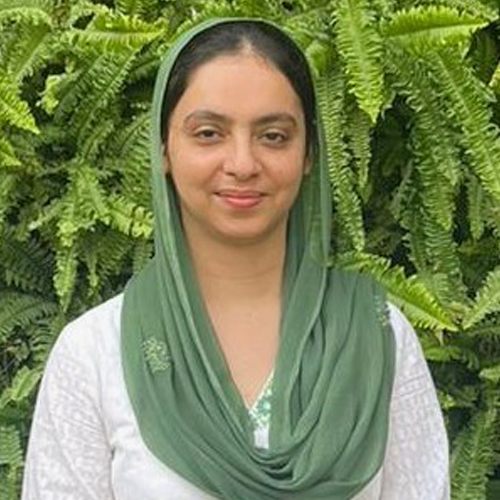
Google Scholar / Social Media
Name : Dr. Navneet Kour
Designation : Scientist B
Brief Background :
Brief Background : Ph.D.in Biochemistry. My vision is to be a part of an organization where I am encouraged to contribute my knowledge, experience, and skills, as well as take the opportunity to learn from others to achieve the goals of the organization. Earlier worked as a Demonstrator in the Department of Biochemistry, Govt. Medical College Kathua. Well-experienced with research on isolation and characterization of compounds from Medicinal plants. Acquainted with cell culture techniques against various human cancer cell lines in vitro.
Contact Details :
Educational Qualification
- BSc. (Biotechnology, Chemistry, English, Zoology) Govt. College for Women, University of Jammu in 2012
- B.Ed. Govt. College of Education, University of Jammu in 2013
- MSc. (Biochemistry) Sher-e-Kashmir University of Agricultural Sciences and Technology of Jammu, 2015
- Ph.D. (Biochemistry) Sher-e-Kashmir University of Agricultural Sciences and Technology of Jammu, 2020
Fellowships
- Maulana Azad National Fellowship-UGC
Research Interests
- Natural product research pertaining to extraction, bioassay-guided fractionation of extracts, isolation and further characterization of Biomolecules, and Column chromatography.
- Handling of cell lines for in vitro cytotoxicity assays, western blotting, and Biochemical analysis.Completed 15 monthtraining program entitled “Basic cell culture technique and in vitro cytotoxicity of some medicinal plants against various human cancer cells” at CSIR-IIIM, Jammu.
Publications:
- Badyal, A., Sharma, V., Kour, N. Singh, S.K. 2016. Anticancer efficacy of methanolic extracts of some medicinal plants from Jammu region, Jammu &Kashmir, India. Indian Journal of Biochemistry & Biophysics, Vol. 53, pp. 51-56.
- Kour, N., Sharma, V., Heer, A. and Singh, S.K. 2017.Punica granatum possesses invitro cytotoxicity against lung cancer cells. International Journal of Tropical Agriculture, 35: 693-698.
- Sharma, V., Heer, A., Kour, N and Sharma, V. 2019. Karonda and Jamun seeds invitro anticancer efficacy. Indian Journal of Traditional Knowledge, 18 (3); 573-578
- Li, L., Mangali, S., Kour, N., Dasari, D., Ghatage, T., Sharma, V., Dhar, A., Bhat, A.2021. Syzygiumcumini (jamun) fruit-extracted phytochemicals exert anti-proliferative effect onovarian cancer cells. Journal of Cancer Research and Therapeutics.DOI: 10.4103/jcrt.JCRT_210_20
- Heer, A., Sharma, V., Kour, N., Badyal, A. and Sharma, S. 2022. Amla possesses antifungal potential against Alternaria alternata, BipolarisSpicifera and Curvularialunata. Current trends in Pharmacy and PharmaceuticalChemistry.4(3); 123-125. https://doi.org/10.18231/j.ctppc.2022.021
- Heer, A., Sharma, V., Kour, N. and Sharma, S. 2022. Terminalia Chebulapossessesin vitro anticancer potential. Indian Journal of Pharmacy and Pharmacology.9(4): 242-246. https://doi.org/10.18231/j.ijpp.2022.044
- Raina, S., Sharma, V., Sheikh, Z.N., Kour, N., Singh, S.K., Zari, A., Zari, T.A., Alharby, H.F. and Hakeem, K.R. 2022. Anticancer activity of Cordia dichotomaagainst a panel of human cancer cell lines and their phytochemical profiling via HPLCand GCMS. Molecules. 27(7); 2185. https://doi.org/10.3390/molecules27072185
- Kour, N., Qayum, A., Lone, B.A., Singh, S.K., Sharma, V. and Gupta, P. 2023. Anovelcarissic acid from fruits of Carissa carandas induced apoptotic cell death in A-549 cells following the activation of caspases.Natural Product Research.1-11.https://doi.org/10.1080/14786419.2023.2232082
Book Chapters:
- Sharma, V. and Kour, N. 2018. Herbal antioxidants chemistry &medicalapplications. Jaya Publishing House. ISBN-978-93-86110-78-7.
- Singh, M., Mohapatra, S., Sanskriti, Kaur, N., Mushtaq, A., Zahid, S., Pandith, A.,Mansoor, S. and Iqbal. Z. 2021. Harnessing the potential of phytochemicals for breast cancer treatment. In: Dietary Phytochemicals. A source of novel Bioactive compounds for the treatment of obesity,Cancer and diabetes. Chukwuebuka Egbunaand Sadia Hassan Editors. Springer. https://doi.org/10.1007/978-3-030-72999-8_12.
- Mansoor, S., Khan, N.F., Farooq, I.., Kaur, N., Manhas, S., Raina, S. and Khan, I.F.2022. Phytoremediation at molecular level. In- Book Phytoremediation. pp-65-90. Elsevier. https://doi.org/10.1016/B978-0-323-89874-4.00011-X
- Mansoor, S., Manhas, S., Rasool, A., Kaur, N. and Mir, M. 2023. Plant oxylipins Types and Classifications. In-Book Phyto-oxylipins. DOI. 10.12019781003316558-1
- Kaur, N., Wani, O.A., Manhas, S., Raina, S., Shabir, H., Nabi, S. U. and Mansoor, S.2023. The Role of Oxylipins in Abiotic stress resistance. In-Phyto-oxylipins. http://dx.doi.org/10.1201/9781003316558-8
- Kour, N., Singh, J., Khera, H.K. 2023. Increasing Prevalence of Antibiotic-Resistant Genes in Wastewater: Impact on Public Health. In: Shah, M.P. (eds) Genomics of Antibiotic-Resistant Bacteria in Industrial Wastewater Treatment. Springer, Cham. https://doi.org/10.1007/978-3-031-44618-4_5

Name : Ravindra Jagannath Waghole
Designation :Technical Officer A
Job Description :
Natural Product Chemistry and Semiochemicals research, Extraction, bio-guided fractionation and purification of plant extracts, Operation and routine maintenance of sophisticated analytical instruments, and providing analytical services to research institutions, academia, and industry
Contact Details :
020-25325124/9970747054
Educational Qualification
- M.Sc. Ph. D
Publications / Achievements / Awards
- Ravindra Jagannath Waghole, Ashwini Vivek Misar, Neha Shashikant Kulkarni, Feroz Khan, Dattatraya Gopal Naik and Sachin Hanmant Jadhav, In vitro and in vivo anti‑inflammatory activity of Tetrastigmasulcatum leaf extract, pure compound and its derivatives, Infammopharmacology (2022) 30:291–311 https://doi.org/10.1007/s10787-021-00897-6
- Niraj S. Ghatpande, Ashwini V. Misar, Ravindra J. Waghole, Sachin H. Jadhav & Prasad P. Kulkarni, Tinospora cordifolia protects against inflammation associated anemia by modulating inflammatory cytokines and hepcidin expression in male Wistar rats. Scientific Reports, (2019) 9:10969
- Tanya Singh, Pranav R. Kshirsagar, Anindita Das, Kunal Yadav, Sweta Mallik, M. B. L. Mascarenhas-Pereira, Tresa Remya A. Thomas, Mamatha S. Shivaramu, Loka Bharathi P. A., N. H. Khadge, B. NagenderNath , Prashant K. Dhakephalkar, Sridhar D. Iyer, Dwijesh Ray, A. B. Valsangkar, Anita Garg, C. Prakash Babu, Ravindra J. Waghole, Shailesh S. Waghmare, Jyutika M. Rajwade, and Kishore M. Paknikar (2019). Implications of Microbial Thiosulfate Utilization in Red Clay Sediments of the Central Indian Basin: The Martian Analogy. Geochemistry, Geophysics, Geosystems1029/2018GC007640, PP 708-729
- Waghole R. J. and Naik D.G. (2016) Chemical Composition and Anti-fungal Properties of Essential oil from Tetrastigmasulcatum (Law.) Gamble Leaves. Essential Oil-Bearing Plants, 19 (3): 568 – 57
- Waghole R. J., Misar A. V., Mujumdar A. M. and Naik D. G. (2015) Antioxidant and Anti-inflammatory Activities of Tetrastigmasulcatum (Law.) Gamble Leaf Extract and Its Fractions. International Journal of Pharmacognosy and Phytochemical Research. 7 (5): 896-902.
- Waghole R. J. and Naik D. G., (2014) Attractant formulations for the management of grape mealy bug Maconellicoccushirsutus(Green). Journal of Biopesticide 7 (suppl.): 83-88.
- Naik, DG, Mujumdar, AM, Waghole, RJ, Misar, AV, Bligh, SWA, Bashall, A, Crowder J. (2004) Taraxer-14-en-3?-ol, an Anti-inflammatory Compound from Sterculia foetida Planta Medica, 70 (1), 68-69.
- Mujumdar, AM, Naik, DG, Waghole, RJ, Kulkarni, DK and Kumbhojkar, MS (2000) Pharmacological studies on Sterculia foetida Pharmaceutical Biology, 38, 13-17.

Google Scholar / Social Media
Name : Dr. Ashwini Misar
Designation :Technical Officer A
Job Description :
Extraction and isolation of bioactive compounds from natural resources.In-vitro and in-vivo evaluation of natural products and their intermediates for their biological activities.
Contact Details :
020-25325101
Educational Qualification
-
B.Sc. (Bio-chemistry)
- M.Sc. (Bio-chemistry)
- Ph.D. (Botany)
Publications / Achievements / Awards
- PA Shete, NS Ghatpande, ME Varma, PV Joshi, KR Suryavanshi, AV Misar, SH Jadhav, PP Apte, PP Kulkarni. Chronic dietary iron overload affects hepatic iron metabolism and cognitive behavior in Wistar rats. 2024, Journal of Trace Elements in Medicine and Biology 84, 127422.
- NV Puranik, S Swami, AV Misar, R Mamgain, SS Gulawani, D. Sarkar, P Srivastava. The first synthesis of podocarflavone A and its analogs and evaluation of their antimycobacterial potential against Mycobacterium tuberculosis with the support of virtual screening. Natural Product Research. 2022, 36 (15), 3879-3886.
- RJ Waghole, AV Misar, NS Kulkarni, F Khan, DG Naik, SH Jadhav. In vitro and in vivo anti-inflammatory activity of Tetrastigmasulcatum leaf extract, pure compound and its derivatives. 2022, Inflammopharmacology 30 (1), 291-311.
- NS Ghatpande, AV Misar, RJ Waghole, SH Jadhav, PP Kulkarni. Tinospora cordifolia protects against inflammation associated anemia by modulating inflammatory cytokines and hepcidin expression in male Wistar rats. 2019. Scientific Reports 9 (1), 10969.
- RJ Waghole, AV Misar, AM Mujumdar, DG Naik. Antioxidant and anti-inflammatory activities of Tetrastigmasulcatum (Law.) gamble leaf extract and its fractions. 2015. J PharmacognPhytochem Res 7, 896-902.
- R Chaubal, AM Mujumdar, A Misar, NR Deshpande. Isolation of phenolic compounds from Acacia nilotica with topical anti-inflammatory activity. 2015, Asian Journal of Chemistry 17 (3), 1595.
- SD Ambavade, AV Misar, PD Ambavade. Pharmacological, nutritional, and analytical aspects of β-sitosterol: a review. Oriental Pharmacy and Experimental Medicine. 2014, 14, 193-211.
- A Misar, AM Mujumdar. Antidiarrhoeal activity of methanolic extract of Acacia farnesiana bark Asian Journal of Chemistry. 2013, 23 (4), 1767-1770.
- R Bhagat, AV Misar, SD Ambavade, DK Kulkarni. HPTLC analysis and anti-inflammatory activity of Jatropha gossypifolia root in mice and wistar rats. 2013, IJPR 3 (1), 13.
- AD Ruikar, AV Misar, RB Jadhav, SR Rojatkar, AM Mujumdar, VG Puranik, NR Deshpande. Sesquiterpene lactone, a potent drug molecule from Artemisia pallens wall with anti-inflammatory activity. 2011, Arzneimittelforschung 61 (09), 510-514.
- PP Dixit, A Misar, AM Mujumdar, S Ghaskadbi. Pre-treatment of Syndrex® protects mice from becoming diabetic after streptozotocin injection. 2011, Fitoterapia 81 (5), 403-412.
- R Bhagat, SD Ambavade, AV Misar, DK Kulkarni. Anti-inflammatory activity of Jatropha gossypifolia leaves in albino mice and Wistar rat. 2011, NISCAIR-CSIR, India.
- AD Ruikar, E Khatiwora, NA Ghayal, AV Misar, AM Mujumdar, VG Puranik, NR Deshpande. Studies on aerial parts of Artemisia pallens wall for phenol, flavonoid and evaluation of antioxidant activity. Journal of Pharmacy and Bioallied Sciences. 2011, 3 (2), 302-305.
- A Ruikar, R Jadhav, A Tambe, A Misra, A Mujumdar, V Puranik, NR Deshpande. Quantification of santonin from Artemisia pallens wall by HPTLC. 2010, International Journal of Pharma and Bio Sciences 1 (1).
- A Misar, AM Mujumdar, A Ruikar, NR Deshpande. Quantification of β-sitosterol from barks of three Acacia species by HPTLC. Journal of Pharmacy Research 3 (11), 2595-2596.
- SR Katade, AV Misar, AM Mujumdar, UD Phalgune, RD Wakharkar, NR Deshpande. CNS depressant activity of ethanol extract of Sterculia guttata seeds in mice. 2009, Indian Journal of Pharmaceutical Sciences 71 (4), 445.
- A Misar, R Bhagat, AM Mujumdar. Antidiarrhoeal activity of Acacia nilotica bark methanol extract. Hindustan antibiotics bulletin. 2007, 49 (1-4), 14-20.
- M Kale, AV Misar, V Dave, M Joshi, AM Mujumdar. Anti-inflammatory activity of Dalbergia lanceolaria bark ethanol extract in mice and rats. 2007. Journal of ethnopharmacology 112 (2), 300-304.
- R Chaubal, AM Mujumdar, A Misar, VH Deshpande, NR Deshpande. Structure-activity relationship study of androstene steroids with respect to local anti-inflammatory activity. 2006, Arzneimittelforschung 56 (06), 394-398.
- R Chaubal, AM Mujumdar, A Misar, VH Deshpande, NR Deshpande. Anti-inflammatories. Antiphlogistics. Antirheumatic Drugs-Structure-Activity Relationship Study of Androstene Steroids with Respect to Local Anti-inflammatory Activity. 2006, Arzneimittelforschung 56 (6), 394-398.
- AM Mujumdar, AV Misar, AS Upadhye. Antidiarrhoeal activity of ethanol extract of the bark of Dalbergia lanceolaria. Journal of ethnopharmacology. 2005, 102 (2), 213-216.
- DG Naik, AM Mujumdar, RJ Waghole, AV Misar, SWA Bligh, A Bashall, J Crowder. Taraxer-14-en-3β-ol, an anti-inflammatory compound from Sterculia foetida L. Planta medica. 2004, 70 (01), 68-69
- AM Mujumdar, AV Misar. Anti-inflammatory activity of Jatropha curcas roots in mice and rats. Journal of ethnopharmacology. 2004, 90 (1), 11-15.
- AV Misar, AS Upadhye, AM Mujumdar. CNS Depressant Activity of Ethanol Extract of Luffa acutangula amara CB Clarke. 2004, Ind J Pharm Sci 66, 463-5.
- AM Mujumdar, DG Naik, AV Misar, HM Puntambekar, CN Dandge. CNS depressant and analgesic activity of a fraction isolated from an ethanol extract of Curcuma amada2004, Pharmaceutical biology 42 (7), 542-546.
- AM Mujumdar, AV Misar. Local anti-inflammatory activity of Jatropha curcas root in miceIndian Journal of Pharmaceutical Sciences. 2003, 65 (5), 554-556.
- MK Kale, AV Misar, VD Vivek Dave, MJ M Joshi. Anti-inflammatory activity of Dalbergia lanceolaria bark ethanol extract in mice and rats. 2007.
- AV Misar, M Kale, M Joshi, AM Mujumdar. Analgesic Activity of Dalbergia lanceolaria. Bark Extract in Swiss Albino Mice. 2005, Pharmaceutical biology 43 (8), 723-725.
- AM Mujumdar, AV Misar, MV Salaskar, AS Upadhye. Antidiarrhoeal Effect of Isolated Fraction (JC) of Jatropha curcas Roots in Mice. 2001, Journal of Natural Remedies, 89-93.
- AM Mujumdar, AS Upadhye, AV Misar. Studies on antidiarrhoeal activity of Jatropha curcus root extract in albino mice. Journal of Ethnopharmacology. 2000, 70 (2), 183-187.

Name : Dr. Priti Apte
Designation :Laboratory Assistant
Job Description :
Coordinator of PhD admissions and B.Sc./MSc. Dissertations, Bioassays and analytical techniques, Statistical analysis of biological studies, and large data sets.
Contact Details :
020-25325102
Educational Qualification
-
B.Sc. Nutrition and Dietetics
- M.Sc. Health Science
- Ph.D. Biometry and Nutrition
Publications / Achievements / Awards
- Ghatpande N, Varma M, Joshi P, Suryavanshi K, Misar A, Jadhav S, Apte, P, Kulkarni, PP. (2024) Chronic dietary iron overload affects hepatic iron metabolism and cognitive behaviour in Wistar rats. Journal of Trace Elements in Medicine and Biology, 8,127422.
- NS Ghatpande, PP Apte, SS Naik, PP Kulkarni. (2019) Fruits and vegetables consumption and their association with the indicators of iron and inflammation status among adolescent girls. Journal of the American College of Nutrition, 38(3) 218-226.
- NS Ghatpande, PP Apte, BN Joshi, SS Naik, DS Bodas, V Sande, P Uttarwar, PP Kulkarni. (2016) Development of a novel smartphone-based application for accurate and sensitive on-field haemoglobin measurement. RSC Advances, 6, 104067-104072.
- NS Ghatpande, PP Apte, SS Naik, BN Joshi, MK Gokhale, PP Kulkarni. (2016) Association of B 12 deficiency and anaemia synergistically increases the risk of high TNF-α levels among adolescent girls. Metall omics, 8, 734-738
- Apte Priti and Rao Shobha. (2015) Central adiposity indicators for assessing risk of high blood pressure among Indian adolescents. Journal of Obesity and Metabolic Research, 2(3); 140-144
- Rao S, Sarode J, Apte P and Kanade A. (2014) Central and Overall Adiposity among Adolescents from Different Socio-Economic Classes in Urban India. Ind. J. Nutr. Dietet. 51, 222.
- Rao S, Sarode J, Apte P and Kanade A. (2014) Risk of High Blood Pressure in Undernourished and Over Nourished Adolescents from Urban Population in India. Ind. J. Nutr. Dietet. 51, 358.
- Rao S and Kanade A and Sarode J and Apte P (2013) Differentials In Risk Of High Blood Pressure In Undernourished And Over-Nourished Adolescents In Urban India: Annals of Nutrition and Metabolism 63
- Priti Apte and Shobha Rao. (2013) Effects of After School Physical Activity Intervention to Reduce Obesity among Indian Adolescent Boys. Current Research in Nutrition and Food Science Vol. 1(1), 93-101.
- Rao, Shobha and Apte, Priti (2009) Physical Activity, Inactivity, And Obesity Among Urban Affluent Adolescents in India. Annals Of Nutrition and Metabolism,55;176–177
- Rao Shobha and Apte Priti (2009) Social class-related gradient in the association of skeletal growth with blood pressure among adolescent boys in India. Public health nutrition, Vol 12; 2256–2262.
- Rao Shobha, Kanade, Asawari N and Apte, Priti P (2008) Validity of some anthropometric indicators in the prediction of high systolic blood pressure among Indian adolescents. Clinical medicine, Paediatrics, Vol.1, 818
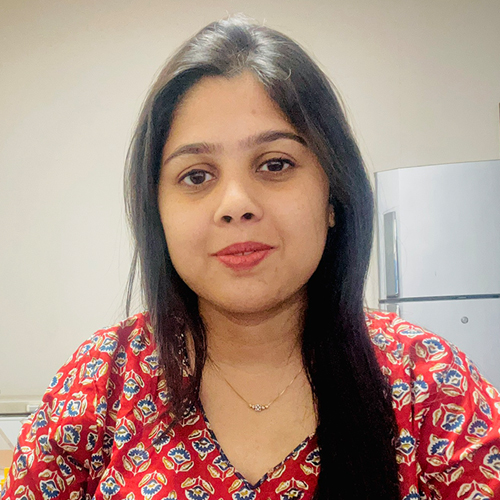
Name :Komal Suryavanshi
Designation : Ph.D. Student (CSIR-JRF)
Brief Background :
Project JRF- Agharkar Research Institute, Pune. (2019-2020)
Ph. D. student- Agharkar Research Institute, Pune. (2020)
Contact Details :
Educational Qualification
- M.Tech (Integrated) Biotechnology – D. Y. Patil University School of Biotechnology and Bioinformatics, CBD-Belapur. (2012-2017).
Research Interests
Alzheimer’s disease is a neurological disorder that results in irreversible neurodegeneration. Dsyhomeostasis of metal ions is commonly observed in Alzheimer’s disease. Imbalances in intracellular concentrations of metal ions such as copper, manganese, and iron may induce neuroinflammation and neurodegeneration.
My research focuses on investigating alterations in neuronal copper metabolism during inflammation. I also study the effect of cisplatin on gene expression related to intracellular copper transport and other metabolic pathways. Inflammation and neurodegeneration studies in the presence of metal ions can provide important insights about early events in the pathology of Alzheimer’s disease.
Publications / Patents / Varieties
-
Kirtani DU, Ghatpande NS, Suryavanshi KR, Kulkarni PP, Kumbhar AA. Fluorescent Copper (II) Complexes of Asymmetric Bis (Thiosemicarbazone)s: Electrochemistry,Cellular Uptake and Antiproliferative Activity. ChemistrySelect 2021; 6:6063–70.
-
Shete PA, Ghatpande NS, Varma ME, Joshi PV, Suryavanshi KR, Misar AV, et al.Chronic dietary iron overload affects hepatic iron metabolism and cognitive behaviour inWistar rats. Journal of Trace Elements in Medicine and Biology 2024; 84:127422.
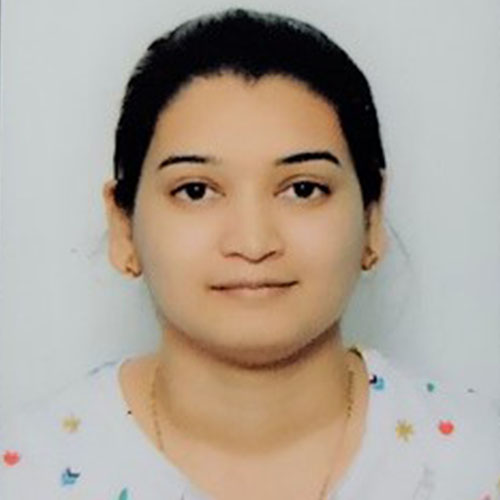
Name : Padmaja Shete
Designation : Senior Research Fellow
Brief Background :
I have completed M.Sc. Biotechnology from Mumbai University. QualifiedICAR and TIFR in 2017 and CSIR-UGC JRF in 2018. I have 3 years of researchexperience in Plant Molecular Biology.
Contact Details :
Educational Qualification
- M.Sc.- Biotechnology
Research Interests
Iron is an essential element required in many important biologicalfunctions, butexcess iron can be toxic. An imbalancein iron uptake and efflux is known tocause several disorders. Iron imbalance often promotes inflammatory conditions by inducing the expression of cytokines like IL6, IL1B, TNF alpha, and TLR 4.
My work is focused on Iron metabolism and inflammation due to irondyshomeostasis. Medicinal plants have different phytoconstituents like steroids, flavonoids, alkaloids, glycosides, phenolics, polysaccharides, and terpenoids are beneficial due to the terpenoids are beneficial due to their properties like anti-inflammatory andimmunomodulatory activity. Crinum species are used in traditional medicinalsystem against cough and asthma because of their anti-inflammatory andimmunomodulatory activity.
Therefore, I aminterested in studying the effect ofCrinum species against inflammation caused due to Iron dyshomeostasis.
Publications / Patents / Varieties
- Padmaja Shete, Niraj Ghatpande, MokshadaEvameshwar Varma, PranavVijay Joshi, KomalRavindra Suryavanshi, Ashwini Misar, SachinJadhav, Priti Apte, Prasad Kulkarni.Chronic dietary iron overload affects hepatic iron metabolism andcognitive behaviour in Wistar rats. Journal of Trace Elements inMedicine and Biology 84, 127422, 2024https://doi.org/10.1016/j.jtemb.2024.127422
- Nissi Sharon, Vinod G. Ugale, Pannala Padmaja, Deepak Lokwani,Chandradeep Salunkhe, Padmaja Shete, Pedavenkatagari NarayanaReddy, Prasad P. KulkarniDevelopment of novel9H‐carbazole‐4H‐chromene hybrids as dual cholinesteraseinhibitors for the treatment of Alzheimer’s disease. MolecularDiversity, 2024https://doi.org/10.1007/s11030-024-10859-z
- Mokshada Varma, Vinod Ugale, Javeria Shaukat, Michael Hollmann,Padmaja Shete, Bhupendra Shravage, Sakharam Tayade, AvinashKumbhar, Ray Butcher, Vinod Jani, Uddhavesh Sonavane, RajendraJoshi, Deepak Lokwani, Prasad Kulkarni. Novel alkyl-substituted 4-methoxy benzaldehyde thiosemicarbazones: Multi-target directedligands for the treatment of Alzheimer’s disease. European Journal ofPharmacology, 957, 176028, 2023https://doi.org/10.1016/j.ejphar.2023.176028

Name : Kartik Suresh Rangari
Designation : Junior Research Fellow
Job Description :
Qualified in B.Sc. (biotechnology) 2020 from Pune University. M.Sc. Biotechnology 2022 Regional Centre for Biotechnology, Rajiv Gandhi Centre for Biotechnology, Trivandrum, Kerala. I joined ARI in 2023 as a JRF
Contact Details :
Educational Qualification
- –
Research Interests
My research interest focuses on investigating the role of metal ions in Alzheimer’s disease (AD) using BV-2 and SH-SY5Y cell lines. Alzheimer’s disease is a progressive neurodegenerative disorder characterized by cognitive decline and the accumulation of amyloid-beta plaques and neurofibrillary tangles in the brain. Metal ions, such as copper, zinc, iron, and aluminium, have been implicated in AD pathology. Understanding the impact of metal ions on cellular processes in relevant cell models can provide valuable insights into the molecular mechanisms underlying AD
Publications / Patents / Varieties
Roshny Prasad, Anil Kadam, Vinitha Vinod Padippurackal, Aparna PulikuttymadomBalasubramanian, Naveen Kumar Chandrakumaran, Kartik Suresh Rangari, Pawan Dnyaneshwar Khangar, Harikrishnan Ajith, Kathiresan Natarajan, Rajesh Chandramohanadas and Shijulal Nelson-Sathi (2024) Discovery of small molecule entry inhibitors targeting the linoleic acid binding pocket of SARS-CoV-2 spike protein Journal of Biomolecular Structure and Dynamics DOI: 10.1080/07391102.2024.2327537

Name : Swapnaja Gulawani
Designation : Ph.D. Scholar (UGC-SRF)
Brief Background :
After graduating in Microbiology from Shivaji University, Kolhapur, she went on to complete her post-graduation in Human Genetics from SRMC University, Chennai. Later, she worked at Omics International, Hyderabad, and then got an opportunity to work at Neuberg-Anand Diagnostics, Bengaluru, as a Cytogeneticist.Currently, she is pursuing her Ph.D. in Biotechnology. She is a UGC-JRF in the Bioprospecting group of ARI.
Contact Details :
Educational Qualification
- -
Research Interests
She is focusing on the ROS-generating ability of synthesized natural products-based molecules in gynecological cancer cells, and her doctoral work includes a mechanistic study to understand the role of molecules in the management of gynecological cancer.
Publications / Patents / Varieties
-
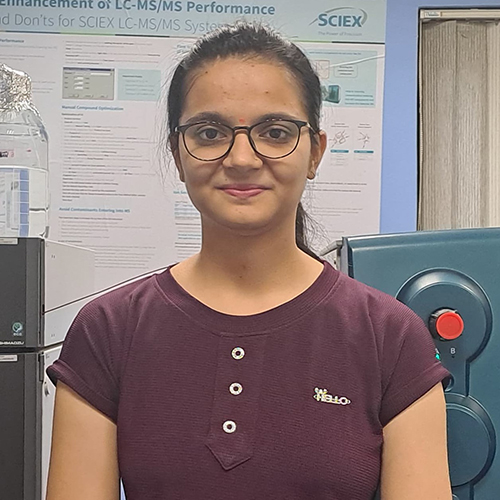
Name: Sakshi Mahajan
Designation: Ph.D student
Brief Background :
She graduated from R. C. Patel ACS College, Shirpur, in 2020 and Post-graduation from the School of Life Sciences, KBC NMU, Jalgaon, in 2022, with. Biotechnology as her specialization. She is a university gold medallist and first-rank holder in BSc and MSc. She has qualified CSIR-NET LS DEC-2023, GATE-XL-2023, GATE-XL & GATE-BT 2024.
Contact Details :
Educational Qualification
- M Sc, Biotechnology
Research Interests
- Metabolomic profiling of Homeopathic drugs and medicinal plants
Publications / Patents / Varieties
-


